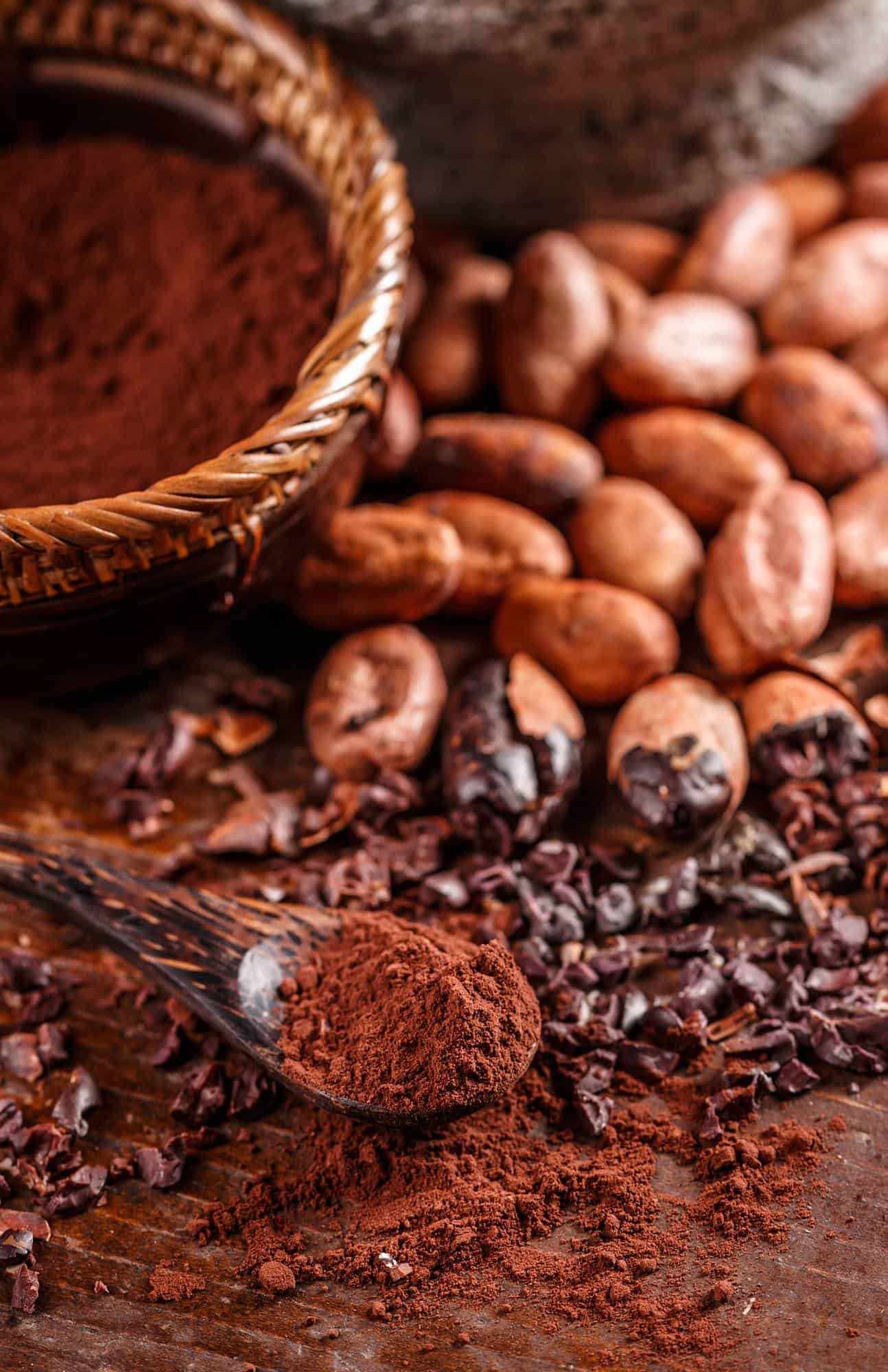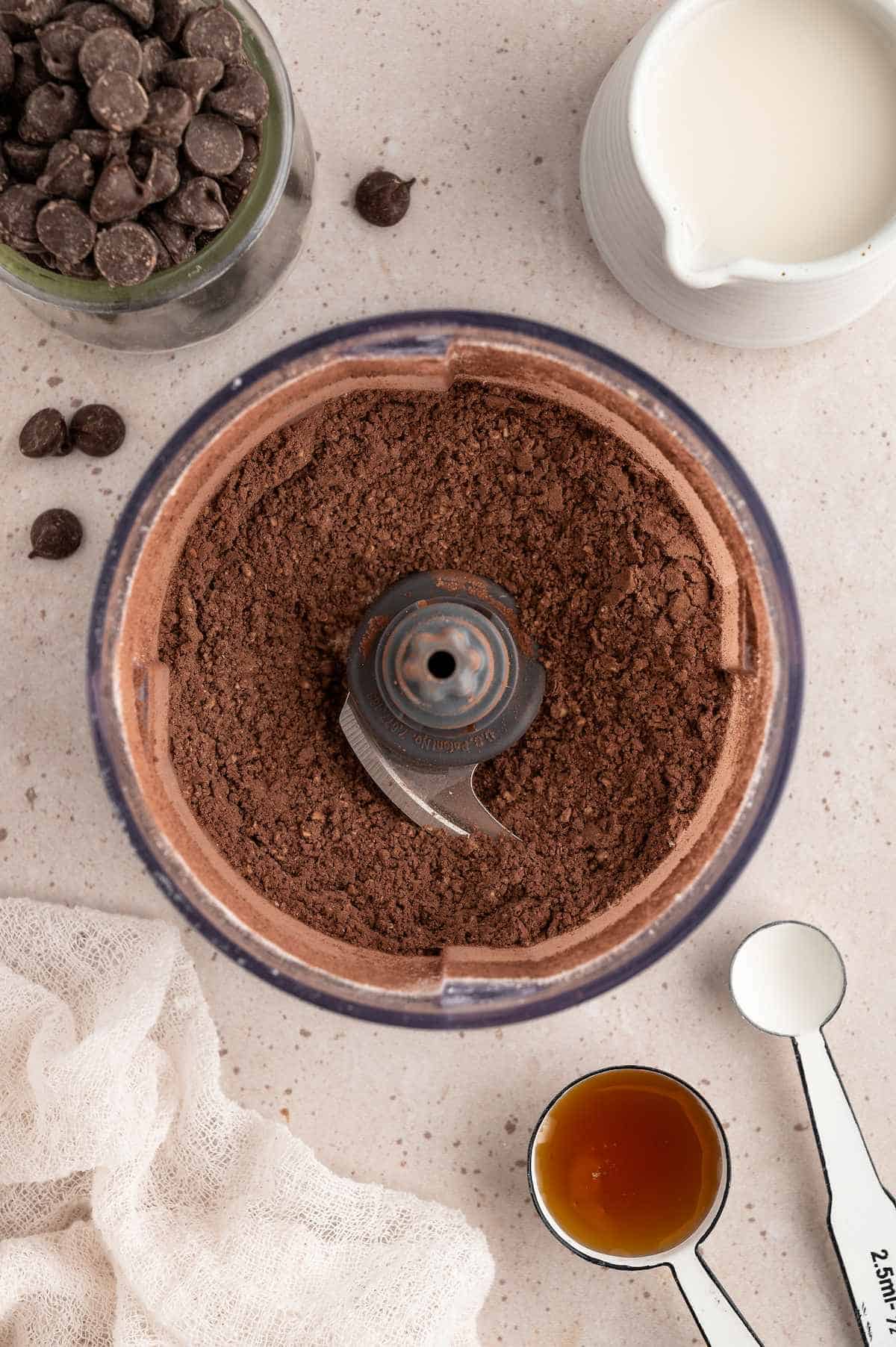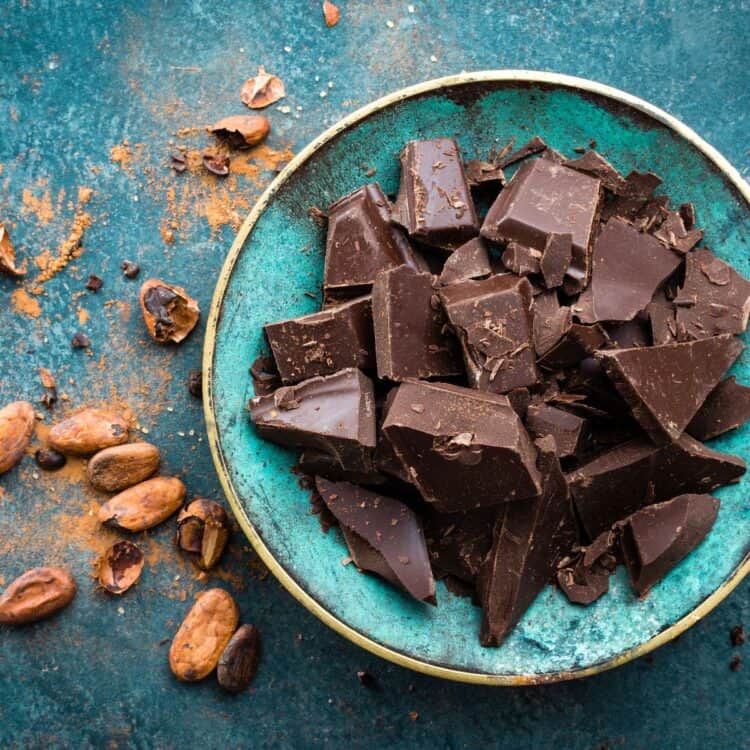Is Cocoa Powder Vegan?


Chocolate-lovers know that good vegan cocoa powder is an essential pantry staple, whether you’re an avid baker or not. Just a spoonful can transform a dessert from bland to brilliant, create a decadent hot beverage, or add depth to savory sauces. And with so many chocolate products containing dairy, it’s no wonder people are skeptical whether cocoa powder is vegan.
Cocoa may seem like a simple ingredient, but the expansive range of options can be overwhelming. Let’s take a step back to understand what goes into everyone’s favorite flavoring.
Table of contents

What Is Cocoa Powder?
Arguably the most pure, concentrated form of chocolate, cocoa powder is the final stage of conventional processing, after cacao beans have been fermented, roasted, and the cocoa butter (fat) removed. This incredibly fine powder is intensely flavorful, slightly bitter, and high in antioxidants and fiber while being low in calories.
Is Cocoa Powder Vegan and Dairy-Free?
Yes! Pure cocoa powder should include one ingredient and one ingredient only: Cocoa beans! This plant-based super food has tons of potential applications for foods both sweet and savory, healthy and indulgent, simple or complex.
Cocoa by itself is always vegan, gluten-free, soy-free, nut-free, and sugar-free, but check labels for the potential of cross contamination in the manufacturing process.
It’s only when dairy and other additives are combined with cocoa powder that it can result in chocolate that is not vegan-friendly. Luckily there are so many vegan chocolate options now, like vegan dark chocolate, vegan white chocolate, and vegan chocolate chips!
Vegan-Friendly Cocoa Powder Brands
Every reputable brand of cocoa powder with nothing else added will be vegan by default! That means you can reliably find the following at grocery stores across the nation to start baking up a storm ASAP.
- Hershey’s
- Ghiradelli
- Guittard
- Valrhona
- Droste
- Navitas
- Rodelle
- …And many more!
Best Recipes For Using Cocoa Powder
Ready to put that cocoa powder to good use with some decadent vegan recipes? These are sure to satisfy those chocolate cravings:
- Vegan Double Chocolate Donuts
- Cozy Hot Chocolate Mix
- Cocoa Dusted Date Truffles
- Super Fudgy Brownies
- Vegan Rocky Road Ice Cream
- Vegan Chocolate Zucchini Bread
- Chocolate Protein Mug Cake

Types Of Cocoa Powder
If you’ve spent any amount of time in the baking aisle wondering exactly what all those terms mean, you’re not alone. The differences between cocoa powders are subtle, but important for getting the best results from your recipes.
Natural Cocoa Powder
Otherwise labeled as unsweetened or baking cocoa, these terms are used interchangeably to describe the same thing. Visually, it’s light brown color and comparatively pale to other options. It’s more acidic, bitter, and emphasizes more fruity notes. Because it has a slightly lower PH, that can affect the way that some baked goods rise, particularly if they’re leavened with baking soda alone.
Dutch Processed Cocoa Powder
Also known as Dutched cocoa, this variety has been alkalized to raise the PH, creating a darker color and deeper, rounder, more mellow flavor. Different brands use different processes to achieve this affect, so there’s a wide range of flavors you’ll find within this category.
Rouge or Red Cocoa Powder
These are just two different outcomes for Dutched cocoa powder that yield a ruby red powder, although that hue fades considerably once baked. They’re a bit more alkalized than Dutch-process cocoa powder but not as much as black cocoa powder.
Black Cocoa Powder
This specialty cocoa powder is the most alkalized option, which gives it a much higher pH and unique black color (think Oreos!). It’s best to not use this as the only cocoa powder in a recipe as you will be left with a dry, crumbly result. Instead, combine with other cocoa powders for optimum flavor and color.
Cacao Powder
Very similar to natural cocoa but lighter in color and flavor, this is considered a raw food because it hasn’t been roasted before being dried at a low temperature. It contains the most vitamins and minerals for anyone seeking the most health benefits from their treats.
Drinking Cocoa
Take cocoa powder and add sugar, and you’ll have instant hot chocolate mix in no time! Most brands also incorporate thickeners, stabilizers, and additional flavors for a better blending and drinking experience. Beware that most mainstream brands add milk powder, and those with mini marshmallows also contain gelatin.












Leave a Comment
cocoa powder is such an important ingredient, even in some recipes we wouldn’t expect
Such an essential ingredient for homemade sweet treats!